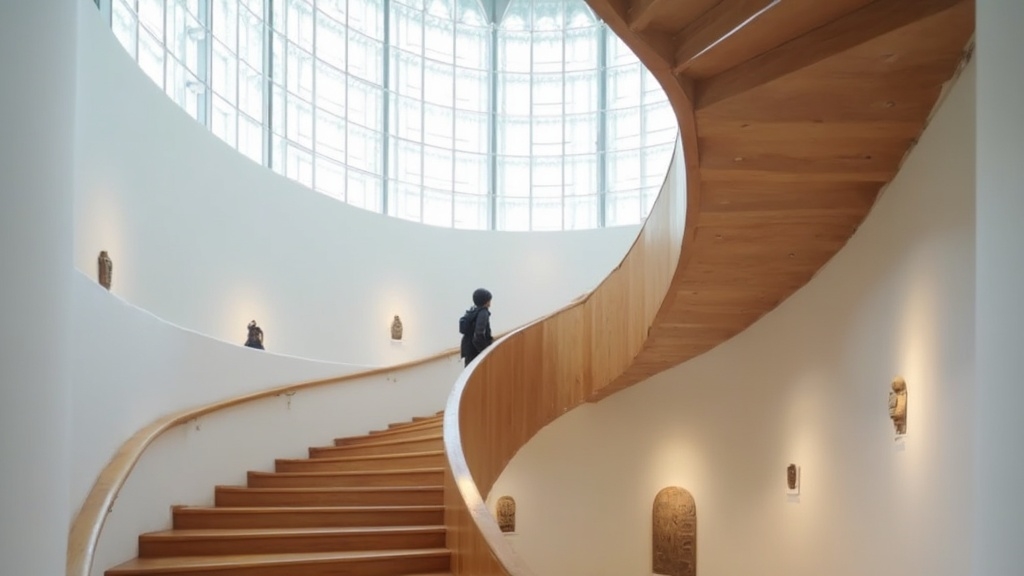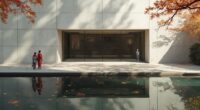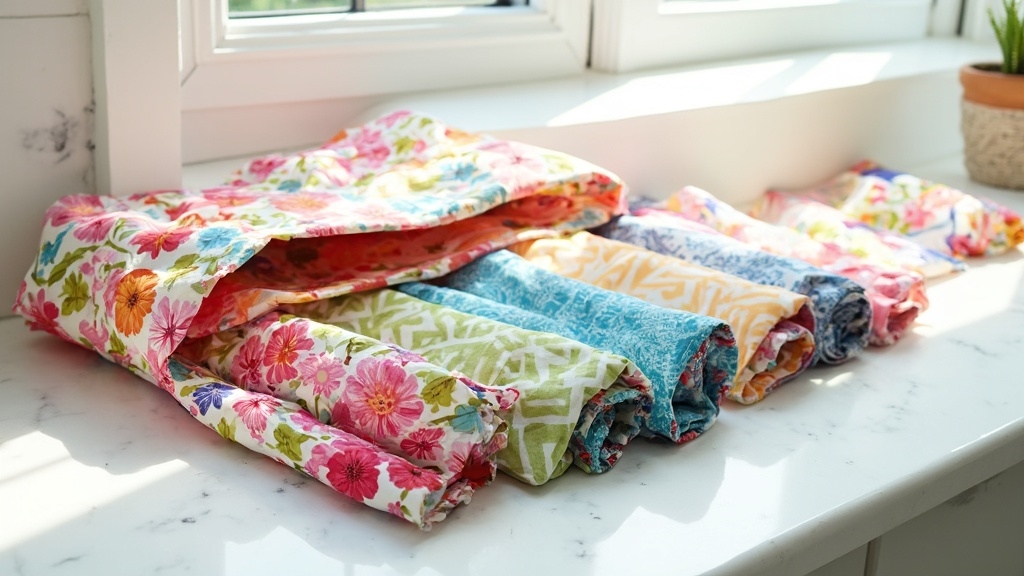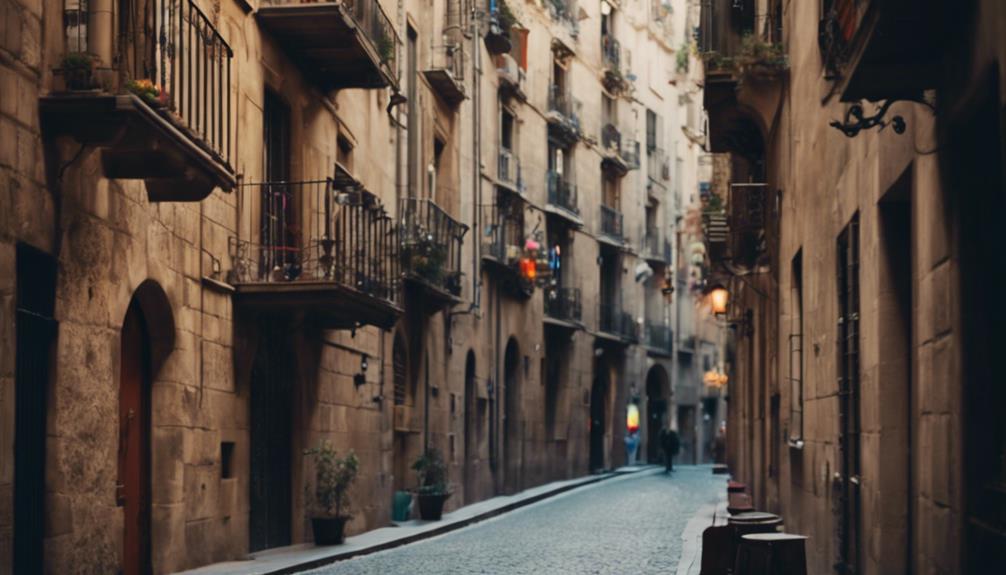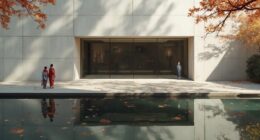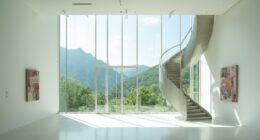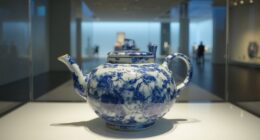Table of Contents Show
There may be products. Products are independently selected by our editors. We may earn an affiliate commission from the links with no charge to you, example: as Amazon Affiliate.
Nara Prefecture houses an impressive collection of museums and art galleries that showcase Japan’s rich cultural heritage. The Nara National Museum stands as the region’s premier institution, featuring 1,947 Buddhist artworks including 13 National Treasures. The Nara Prefectural Museum of Folklore preserves over 42,000 historical artifacts, while contemporary spaces display modern Japanese art. Local venues celebrate traditional crafts like Akahada pottery and Yoshino washi paper. This cultural landscape offers deeper insights into Japan’s artistic evolution.
Key Takeaways
- Nara National Museum houses nearly 2,000 Buddhist artifacts, including 100 masterpiece sculptures and 13 National Treasures.
- The Nara Prefectural Museum of Folklore contains over 42,000 historical artifacts showcasing the region’s cultural heritage.
- Nara Crafts Museum in Naramachi displays local artisans’ work featuring traditional crafts like lacquerware, pottery, and paper.
- The Nara Prefectural Museum exhibits 4,600 modern artworks, focusing on local artists and offering interactive workshops.
- The Nara Palace Site Museum preserves and presents artifacts from Japan’s first permanent capital period.
A Cultural Journey Through Nara’s Museum District

Nestled within the historic heart of Japan’s first permanent capital, Nara’s museum district offers visitors an unparalleled journey through Japanese art, culture, and history. The district’s folk traditions come alive at the Nara Prefectural Museum of Folklore, housing over 42,000 historical artifacts including rare forest-related items from Yoshino. Fifteen preserved Edo-period buildings showcase authentic artistic craftsmanship, with the Former Usui Family Residence designated as an Important Cultural Property. Experiencing diverse cultures firsthand allows visitors to appreciate the intricate tapestry of Japan’s cultural heritage. Regional museums like the Nara Palace Site Museum illuminate the area’s imperial past, while specialized venues such as the Nara Crafts Museum celebrate local artisans’ work in the historic Naramachi district. The Kofukuji National Treasure Museum features an impressive collection of Buddhist sculptures and artifacts dating back centuries. This rich concentration of cultural heritage institutions provides extensive insights into Japan’s artistic and historical development through carefully curated collections and architectural preservation. The museum’s impressive collection includes Tomimoto Kenkichi exhibits, showcasing the work of one of Japan’s most influential ceramic artists. The Nara National Museum holds annual exhibitions featuring Shosoin treasures from the renowned Todai-ji Temple.
The Sacred Buddhist Art of Nara National Museum
Among Nara’s cultural institutions, the Nara National Museum stands as a premier repository of sacred Buddhist art, housing one of Japan’s most extensive collections of religious artifacts and statuary. The museum’s Buddhist Sculpture Hall showcases approximately 100 masterpieces, displaying ancient techniques in materials ranging from wood and bronze to clay. Distinguished works include revered National Treasures and Important Cultural Properties that exemplify classical Buddhist iconography from the Asuka through Kamakura periods. The collection encompasses 1,947 items, featuring 13 National Treasures and 114 Important Cultural Properties. Located within the culturally rich Nara Park, the museum enjoys close proximity to historic temples like Todai-ji and Kofuku-ji. Notable exhibits include the statue of Prince Shotoku, the Twelve Heavenly Generals, and an extraordinarily detailed 3-centimeter wooden Buddha, demonstrating the pinnacle of Japanese sculptural craftsmanship. Engaging with these artifacts invites visitors to embrace growth and gain a profound appreciation for the historical context surrounding sacred Buddhist art. The museum’s prestigious Shoso-in Treasures exhibition, held annually for 17 days in autumn, provides a rare opportunity to view artifacts that remain hidden from public view for a decade afterward. The museum’s main building, completed in 1894, showcases the elegant French Renaissance style and stands as an Important Cultural Property of Japan.
Preserving Ancient Treasures: Conservation Methods
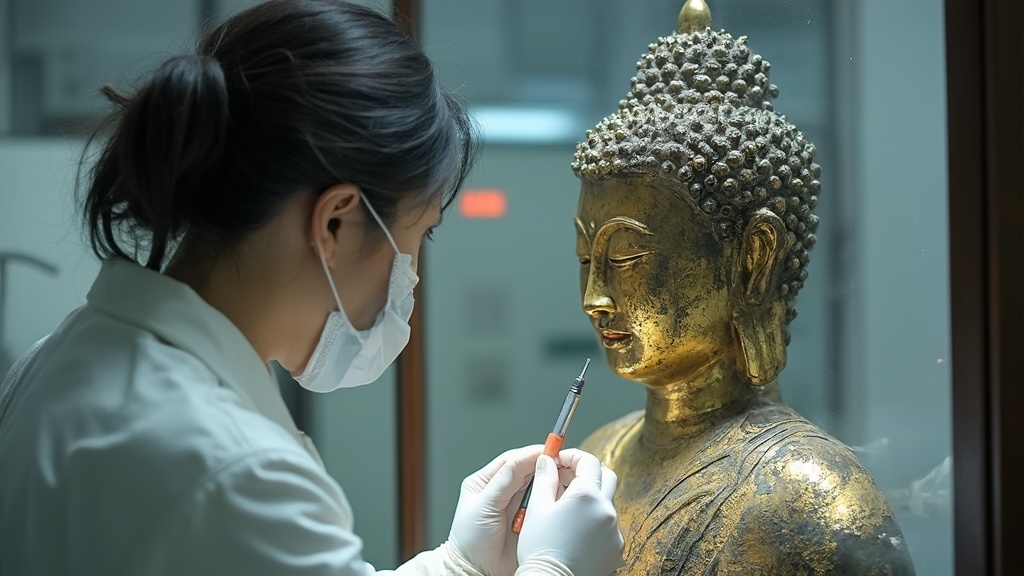
Throughout Nara Prefecture’s museums and cultural institutions, sophisticated conservation methods safeguard centuries of artistic heritage. The Nara National Museum Conservation Center leads artifact preservation efforts through innovative restoration techniques and scientific analysis, ensuring cultural treasures remain intact for future generations. Meticulous dark surface cleaning has proven essential in reviving artifacts to their original grandeur. In line with principles from the late 19th century, experts apply traditional materials and techniques in all restoration work to maintain authenticity. Expert specialists provide invaluable guidance for the preservation of sculptures, paintings, and written materials. Interdisciplinary approaches, similar to those promoted in marine science education, foster collaboration between conservationists and other fields to enhance preservation efforts.
- Surface cleaning and pigment stabilization preserve original artwork authenticity
- Advanced 3D mapping documents degradation patterns before restoration begins
- Environmental monitoring systems protect artifacts from temperature and humidity damage
- Specialized resin treatments and desalination processes prevent material deterioration
- Dedicated facilities handle specific preservation needs for sculptures, paintings, and texts
These preservation methods combine traditional knowledge with modern technology, supported by the Cultural Property Conservation and Restoration Fund and guided by established legal frameworks that prioritize national treasures and important cultural properties.
Contemporary Artistry at Nara Prefectural Museum
A rich tapestry of contemporary art unfolds at the Nara Prefectural Museum, where over 4,600 modern and contemporary works showcase the region’s artistic evolution. The museum’s collection emphasizes Nara-linked artists, featuring contemporary ceramics by Tomimoto Kenkichi and modern graphic designs by Ikko Tanaka. The museum’s distinctive structure features deep concrete eaves that reflect traditional Japanese architectural elements. The institution helps preserve Buddhist heritage through dedicated educational programs and exhibitions. The museum’s convenient proximity to Unemejinja Shrine and Sarusawa Pond makes it part of a cultural heritage district perfect for art enthusiasts. Furthermore, the museum champions mindful living by offering workshops that encourage visitors to engage thoughtfully with art and their surroundings.
Located five minutes from Kintetsu Nara Station, the museum operates through rotating themed exhibitions, making its extensive holdings accessible to visitors. Educational programs and digital partnerships with Google Arts & Culture guarantee broad engagement with the collections. The museum continues to expand through strategic acquisitions, particularly focusing on post-war contemporary art from the Ohashi Kaichi collection and works by living artists. Admission fees vary by exhibition, with standard entry at 400 yen for adults and discounted rates for students and groups.
Seasonal Exhibitions and Special Events
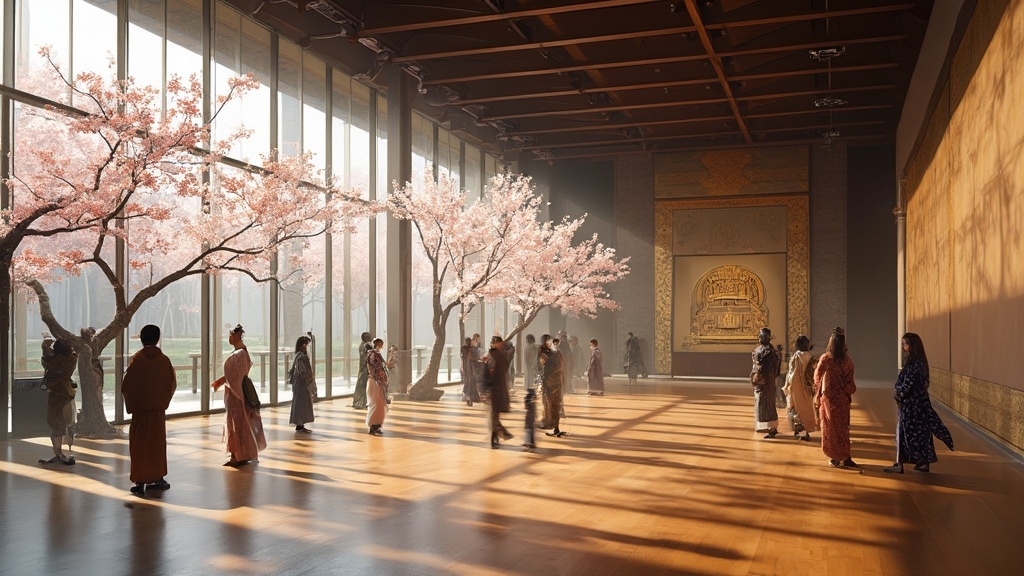
Multiple seasonal exhibitions and special events energize Nara’s museum landscape throughout the year, showcasing rare artifacts, traditional performances, and cultural demonstrations. The museums coordinate Seasonal Programs to maximize visitor engagement through rotating displays and interactive experiences. The popular River Forest Theatre at Genryukan offers immersive 15-minute video experiences that change with the seasons. Special Workshops connect visitors with traditional crafts, conservation techniques, and artistic practices. The Buddhist Sculpture Lab leads public demonstrations of ancient preservation methods. The Nara Prefectural Museum of Art specializes in displaying works by talented local artists from the region. Engaging with locals during exhibitions can foster cultural awareness by highlighting diverse perspectives and traditions.
- Conservation demonstrations at the Historical and Artistic Culture Complex reveal preservation methods for cultural treasures.
- Tenri Sankokan’s thematic exhibitions rotate 3-4 times annually, featuring concerts and expert lectures.
- Extended evening hours in museum artistic wings accommodate special cultural performances.
- Interactive workshops teach traditional crafting techniques to preserve cultural heritage.
- Seasonal festival celebrations incorporate music, dance, and ceremonial demonstrations throughout museum spaces.
Architectural Highlights of Nara’s Museums
Nara’s museum architecture masterfully blends traditional Japanese aesthetics with modern functionality, exemplified by Katayama Teruo’s revolutionary designs for the Prefectural Museum of Art. His incorporation of fair-faced concrete columns and deep eaves creates architectural harmony between modern materials and classical temple motifs, while serving the practical needs of museum visitors.
The Buddhist Sculpture Hall, formerly the Nara Imperial Museum, demonstrates successful adaptive reuse of early 20th-century structures. Its concrete-and-brick hybrid design preserves historical integrity while providing ideal conditions for artifact preservation through natural lighting and ventilation. As the first Western-style building in Nara Prefecture, it set an important precedent for future architectural developments. The Nara Prefecture Historical and Artistic Culture Complex further enhances this architectural legacy, integrating conservation labs, studios, and public spaces into a cohesive waterside campus that serves both cultural preservation and community engagement.
Exploring Local Artists and Their Legacy
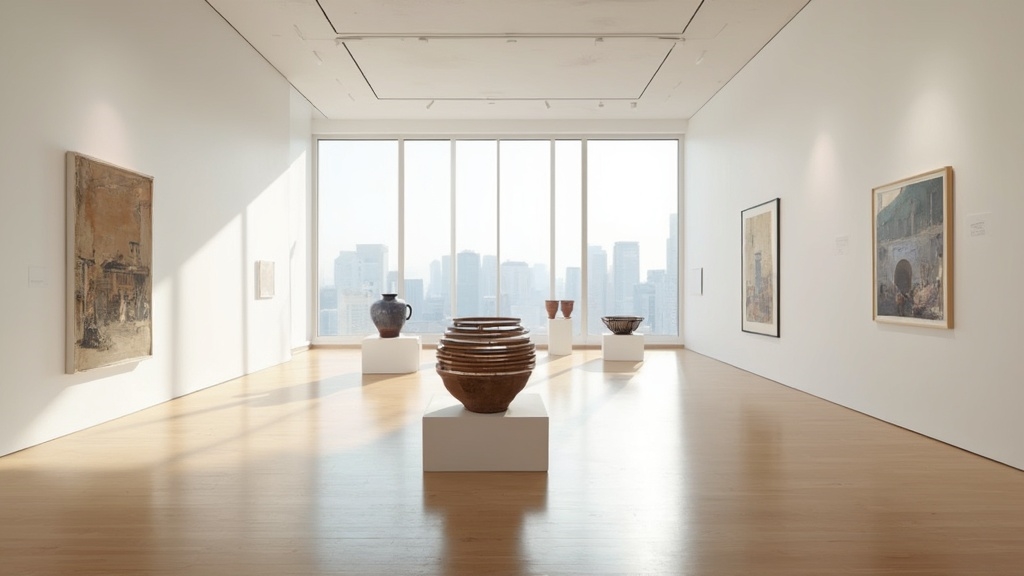
Throughout centuries of artistic innovation, traditional craftsmen and artisans have shaped Nara Prefecture’s cultural identity through their mastery of specialized techniques. Local craftsmanship flourishes through generations of dedicated artisans preserving traditional techniques:
- Kobaien ink makers maintain Japan’s centuries-old ink production, supplying 90% of the nation’s needs since 1577
- Akahada Pottery artisans craft distinctive tea ceremony pieces using iron-rich red clay from Mt. Akahada
- Nara Shikki lacquerware masters incorporate intricate Raden-nuri mother-of-pearl techniques dating to the Tempyo period
- Nurishi and Urushiya Za guilds safeguard ancient japanning methods for tea utensils and armor
- Meiji-era craftsmen revitalized Nara’s lacquerware traditions through meticulous Shosoin artifact reproductions
The Yoshino region’s master papermakers create handcrafted washi paper that is sought after by art restorers worldwide for its exceptional strength and texture. These living traditions, showcased in venues like the Nara Prefectural Museum of Art, continue enriching Japanese cultural heritage. The region’s skilled artisans also produce exquisite openwork fans featuring traditional motifs of deer and wisteria blossoms. The historic Naramachi district hosts numerous small galleries where visitors can explore contemporary interpretations of these time-honored crafts.
Planning Your Museum Visit: Essential Tips
Planning a successful museum visit in Nara Prefecture requires thoughtful preparation to maximize the cultural experience. Visitors can streamline their experience by focusing on advance ticket purchasing through online platforms, which eliminates waiting time and guarantees entry to desired exhibitions.
Prior research into seasonal and special exhibitions helps visitors create an efficient itinerary that aligns with their interests and available time. Many museums offer interactive exhibits that provide hands-on learning experiences. Checking museum websites for temporary closures, renovation schedules, and special events prevents unexpected disruptions. For those seeking deeper cultural insights, comparing and booking guided tours in advance provides enhanced learning opportunities. Weekday visits typically offer a more relaxed atmosphere for exploring exhibitions. These preparatory steps allow visitors to fully immerse themselves in Nara’s rich artistic and cultural heritage while serving their educational and cultural objectives.
The Evolution of Nara’s Art Scene

The artistic legacy of Nara Prefecture spans over a millennium, beginning with the establishment of the region as Japan’s cultural epicenter during the Nara Period (710-794). This cultural significance manifested through Buddhist artistry, particularly at Todai-ji Temple and Kofukuji complex, where innovative techniques like hollow dry lacquer revolutionized sculpture creation.
- Ancient Buddhist sculptures commissioned by Empress Genshō showcase the sophisticated craftsmanship of early artisans
- Traditional temple architecture demonstrates the precision of axial design principles
- The Nara Prefectural Museum bridges historical and contemporary art through thoughtful preservation
- Contemporary artist Yoshitomo Nara represents the prefecture’s artistic transformation, blending punk aesthetics with traditional elements
- Post-2011 disaster response highlights how Nara’s art scene evolved to address modern social challenges through community-focused initiatives
Frequently Asked Questions
Can Visitors Take Photos of the Buddhist Statues Inside the Museums?
Photo policies generally permit photography of Buddhist statues in designated gallery areas, prioritizing statue preservation through restrictions on flash, tripods, and commercial use while allowing personal documentation.
Are Guided Tours Available in Languages Other Than Japanese?
In a sea of endless curiosity, most guided tours are conducted in Japanese only. Visitors should inquire about audio guides and multilingual pamphlets when planning their visit for alternative language support.
What Dining Options Are Available Near Both Museums?
Visitors can enjoy diverse local cuisine near the museums, from traditional Japanese restaurants to casual cafes. The dining atmosphere ranges from elegant indoor settings to relaxing outdoor terraces overlooking historic grounds.
Do the Museums Offer Special Programs or Workshops for Children?
Like a garden nurturing young seeds, enriching children’s programs bloom through hands-on nature activities, interactive workshops featuring aquarium encounters, seasonal cooking classes, and traditional craftwork experiences.
Is There a Combined Ticket Option for Visiting Both Museums?
No combined ticket options exist between these institutions. Each museum requires separate admission fees, and there are no museum discounts for visiting both locations on the same day.
Conclusion
Nara Prefecture’s museums and art galleries stand as essential cultural repositories, attracting over 2.3 million visitors annually. These institutions not only preserve Japan’s artistic heritage but also foster contemporary creative expression. Through rotating exhibitions, conservation efforts, and educational programs, Nara’s museum district continues to bridge ancient traditions with modern artistic sensibilities, ensuring the region’s cultural legacy for future generations.
